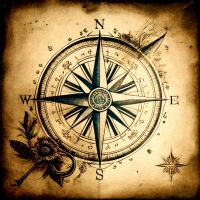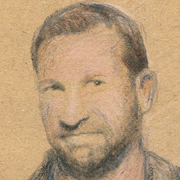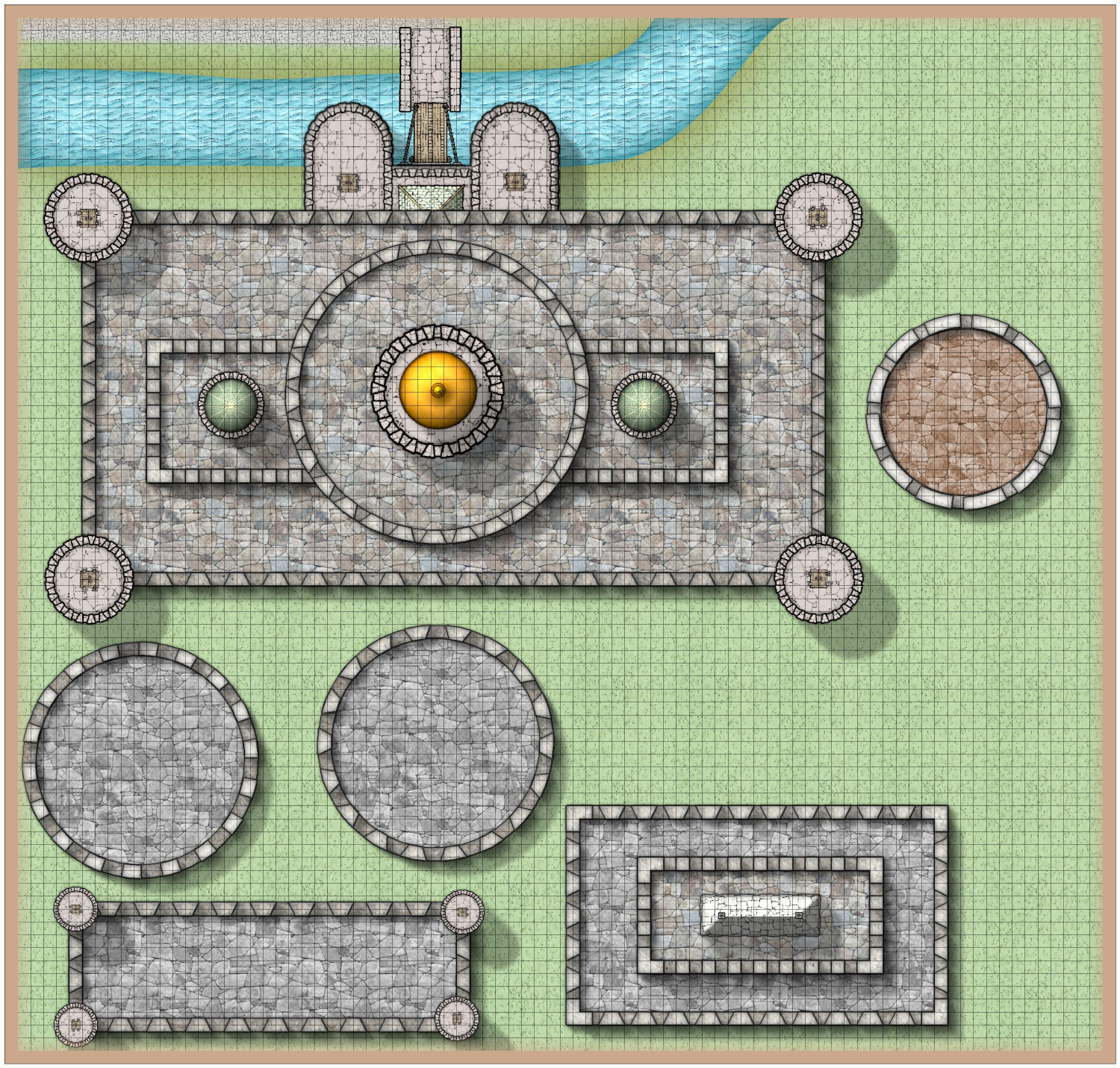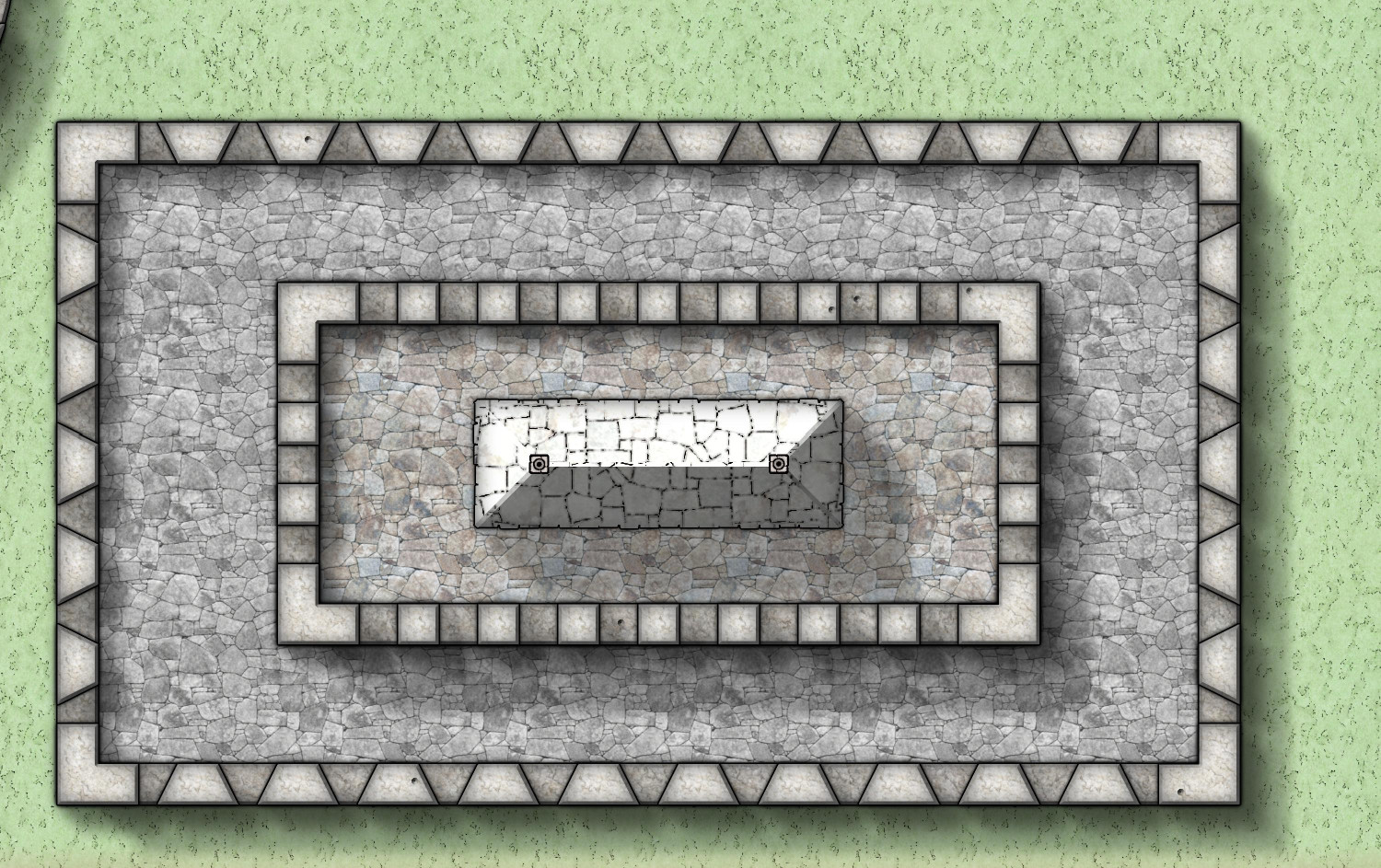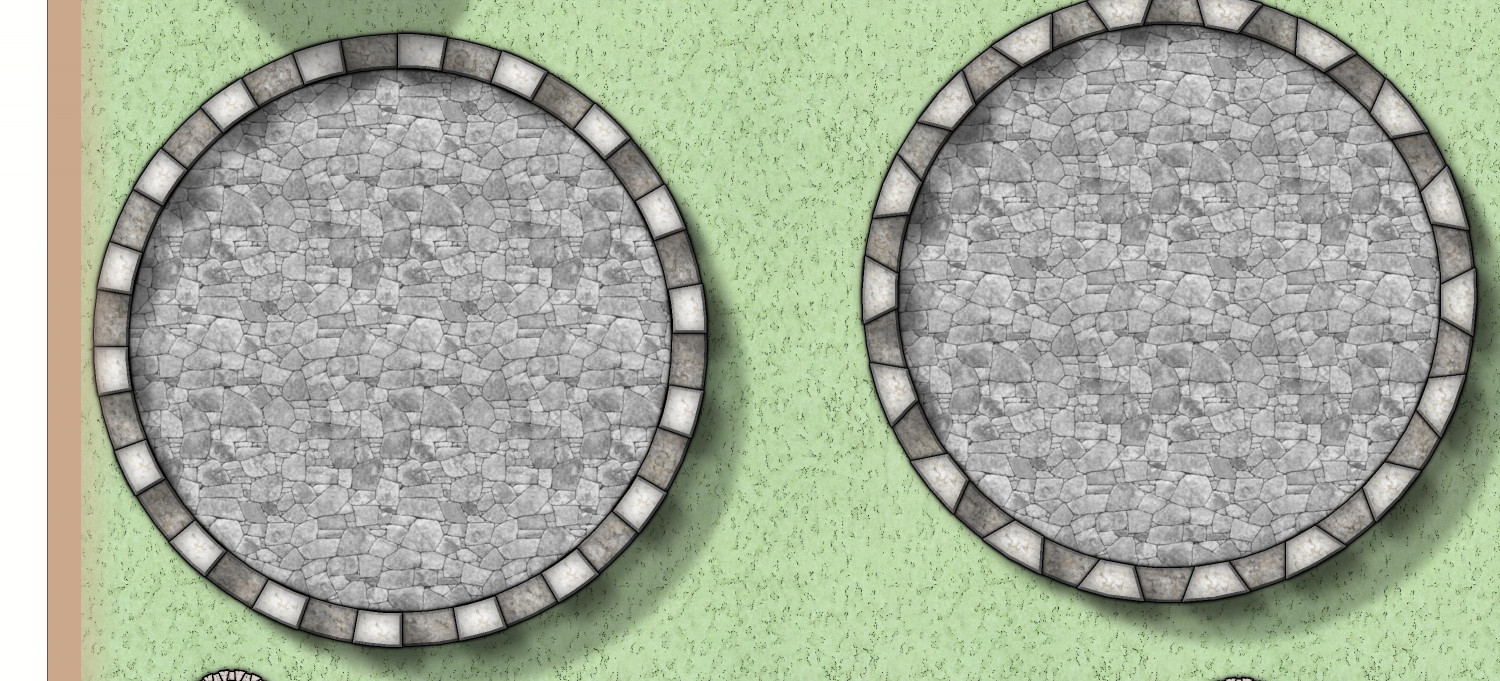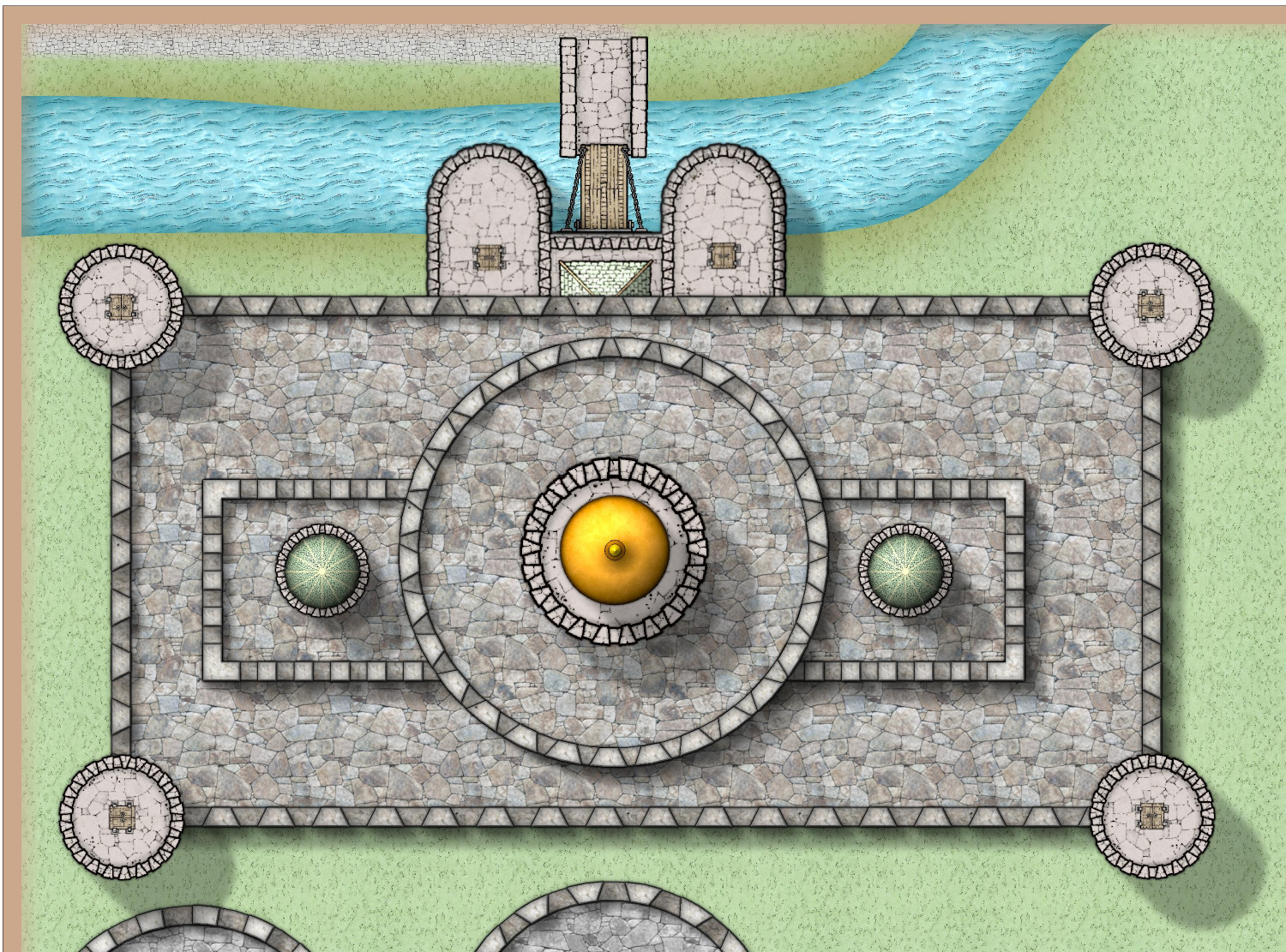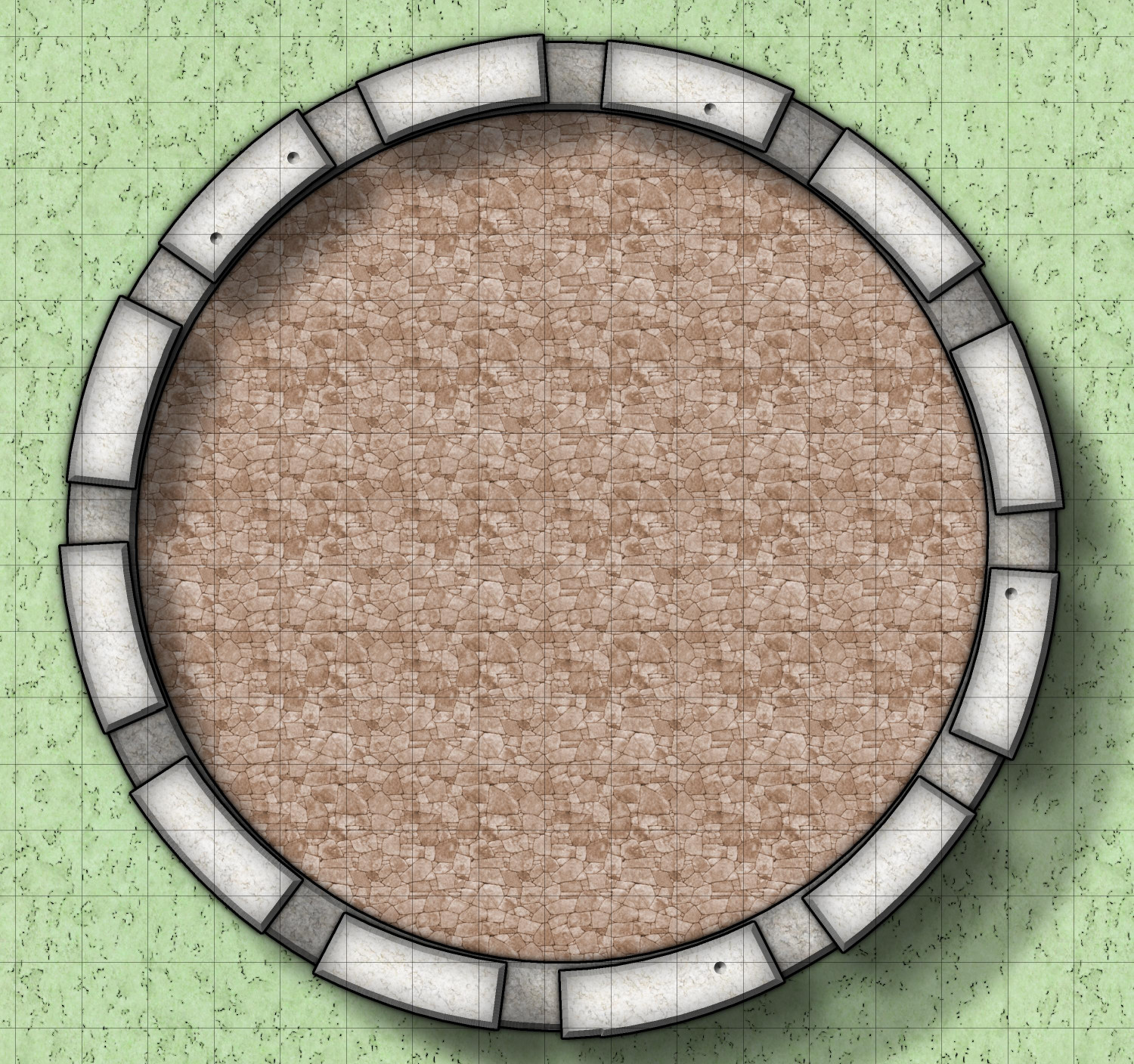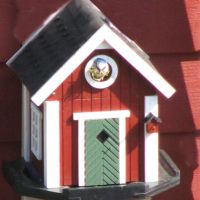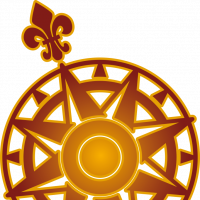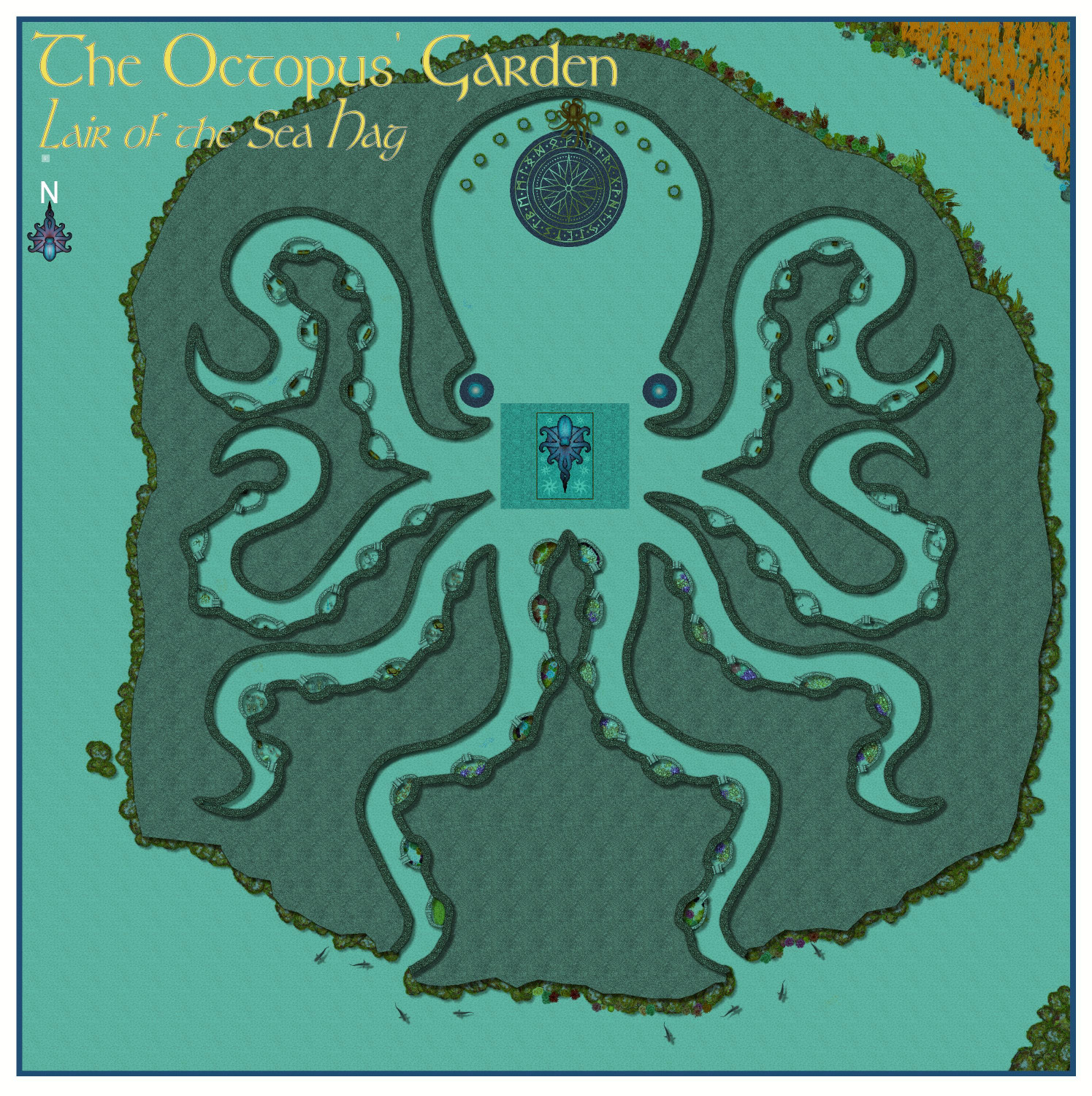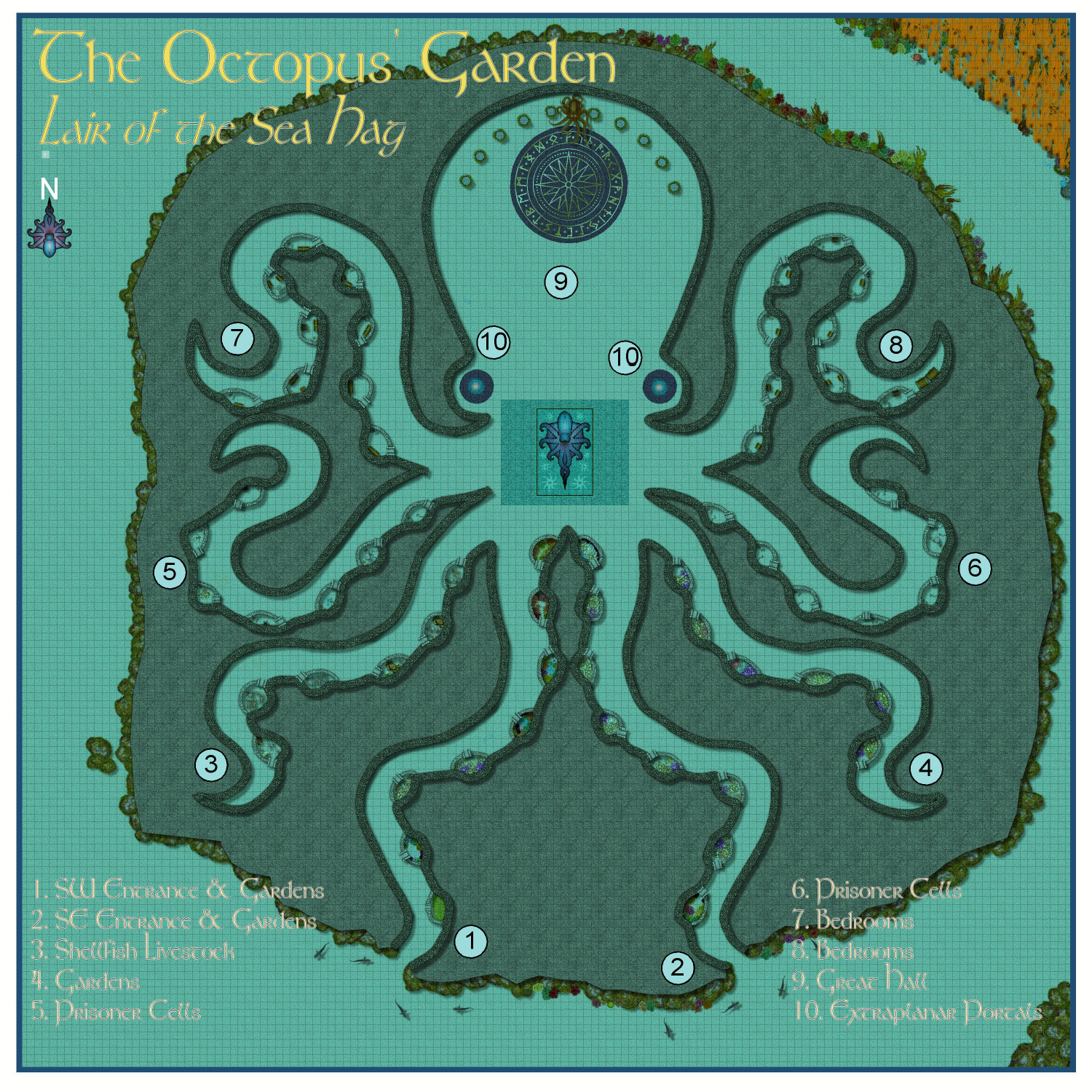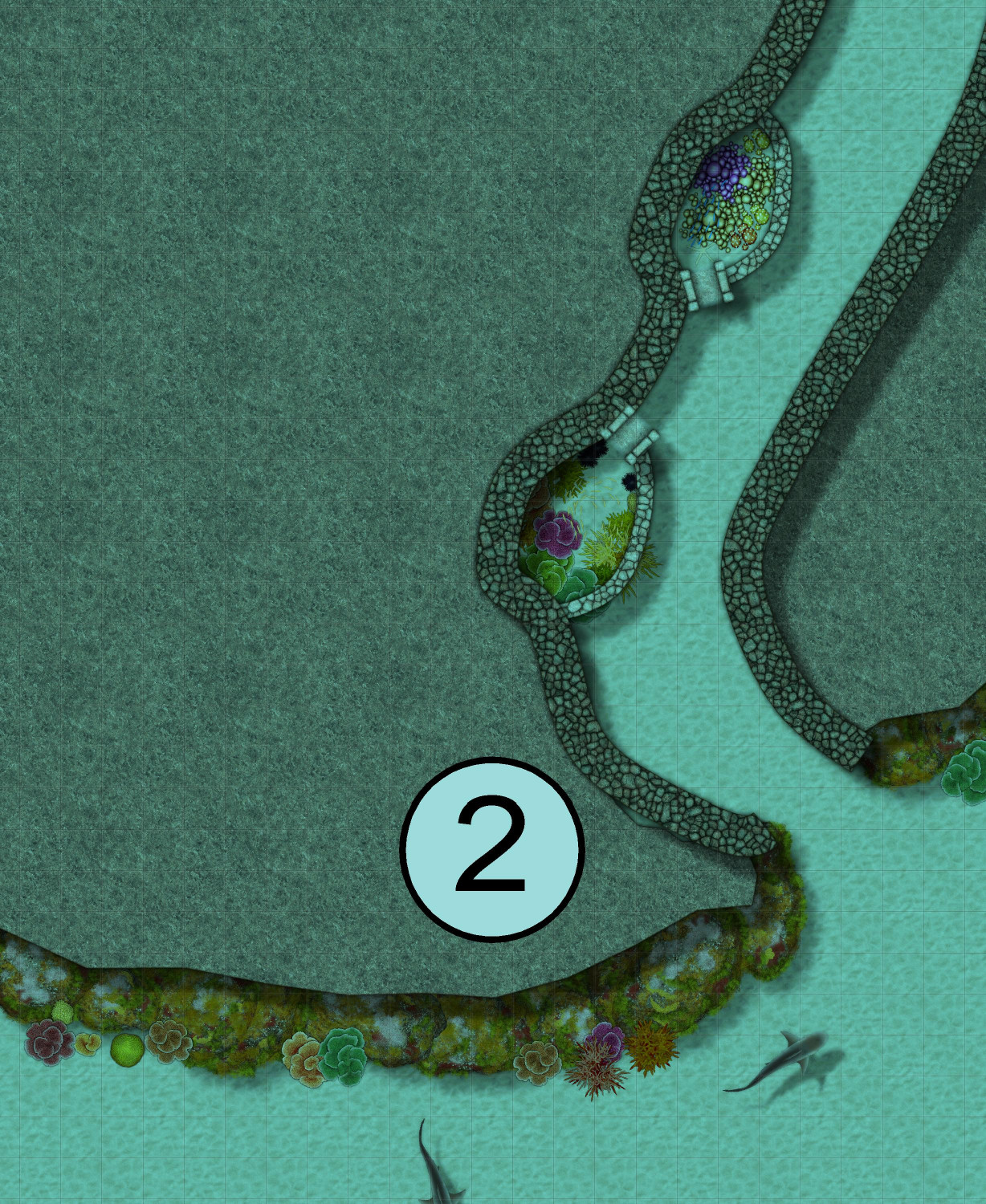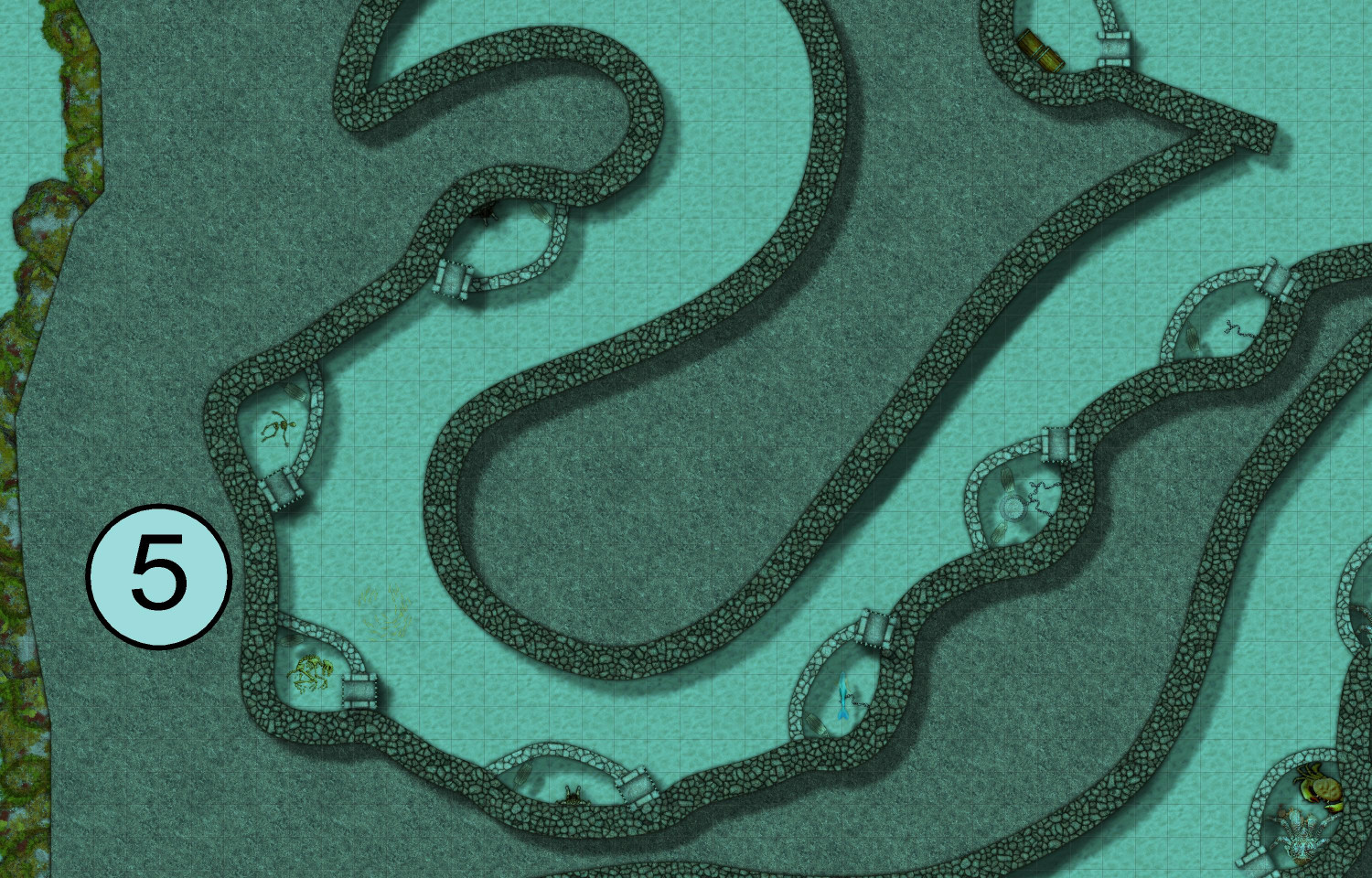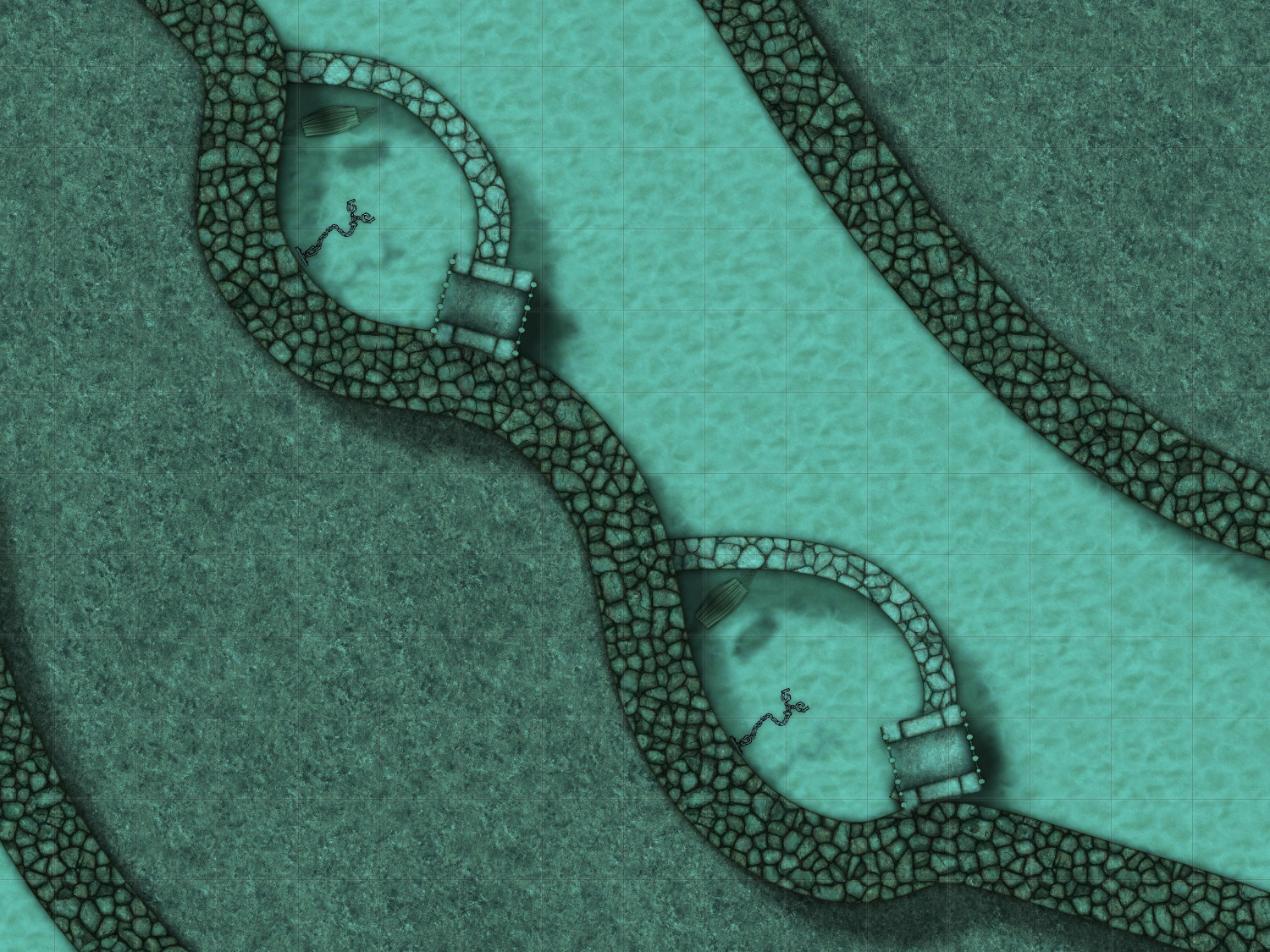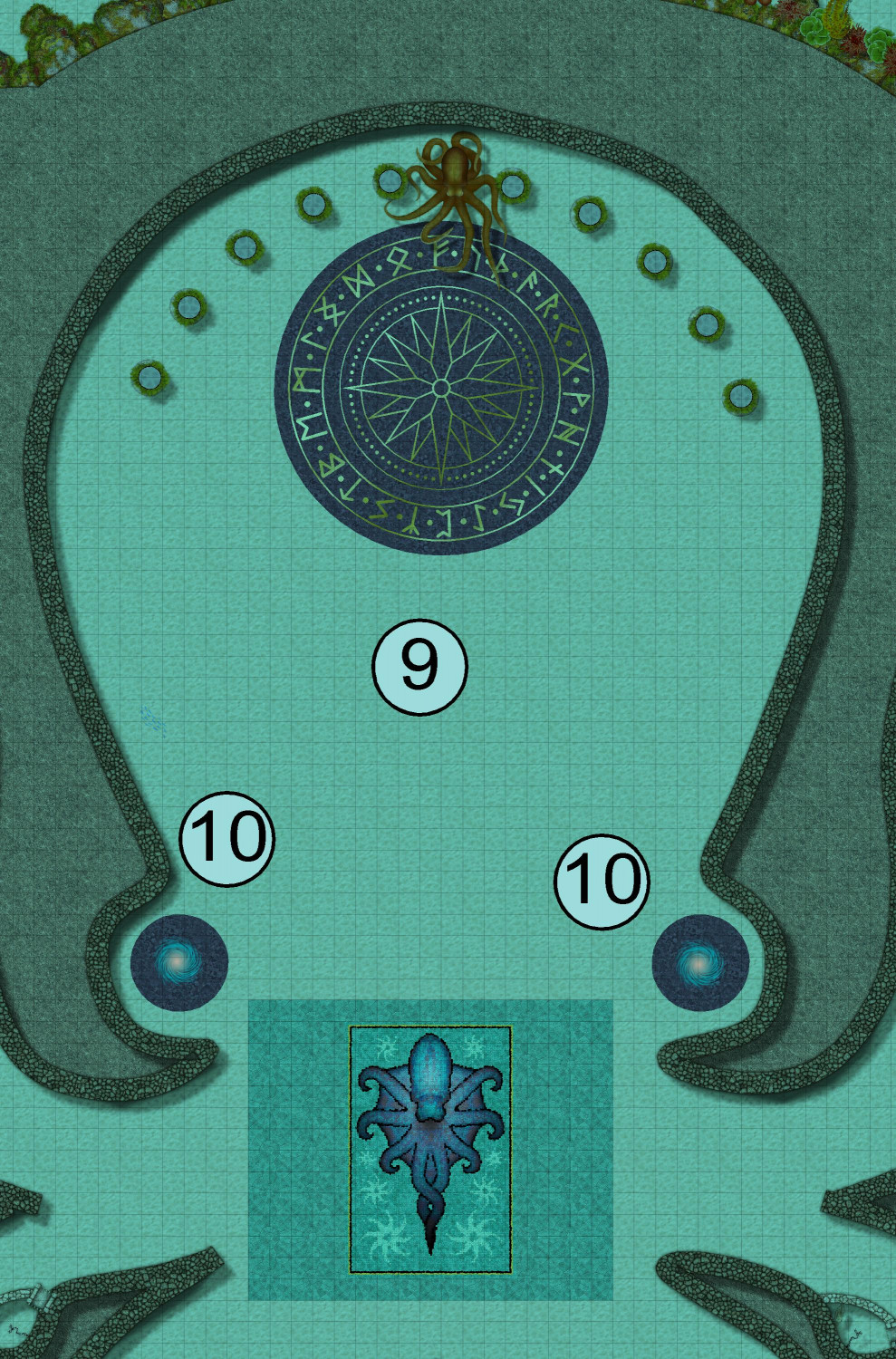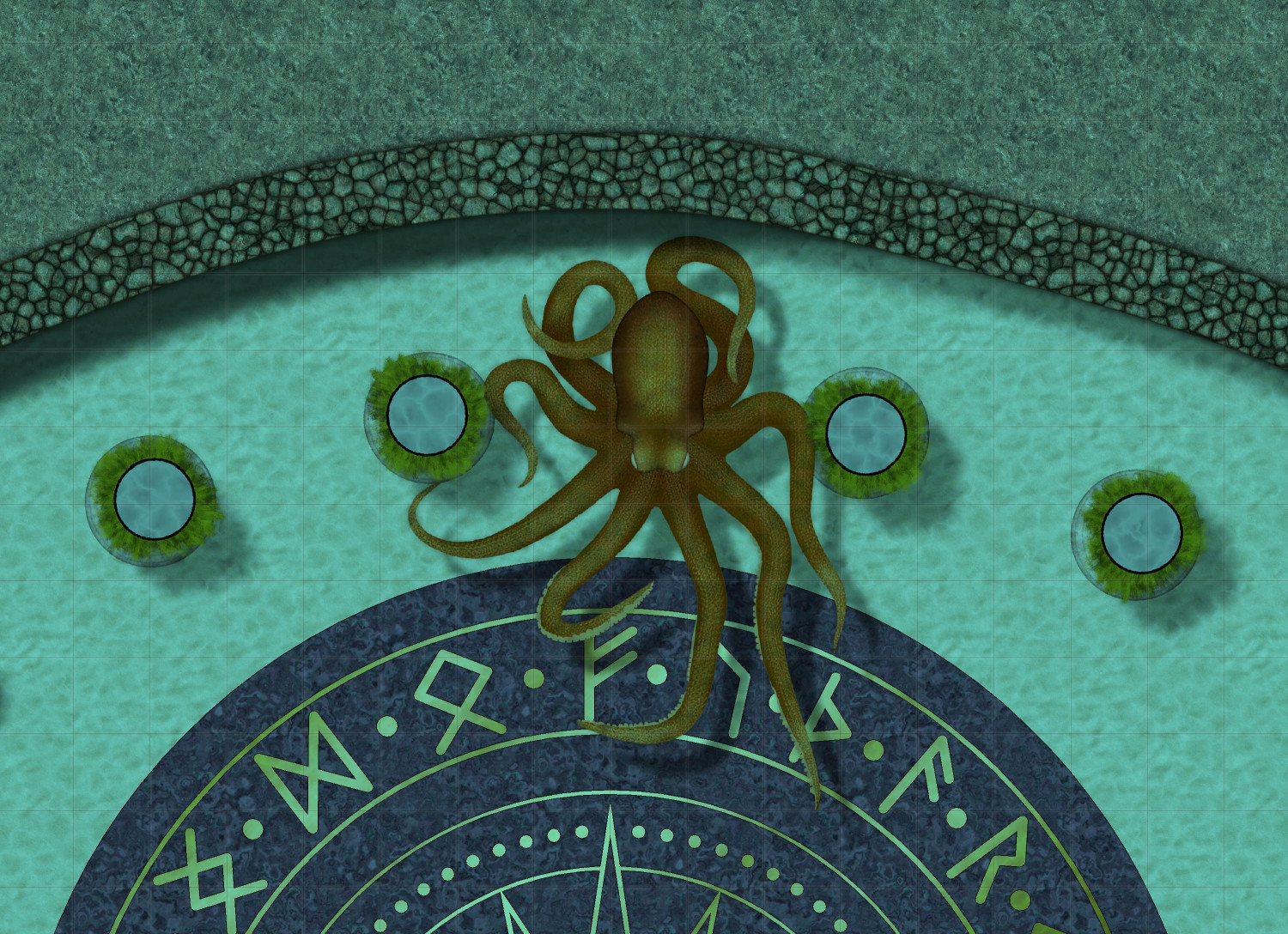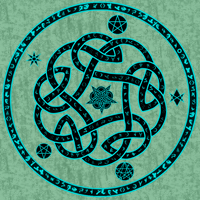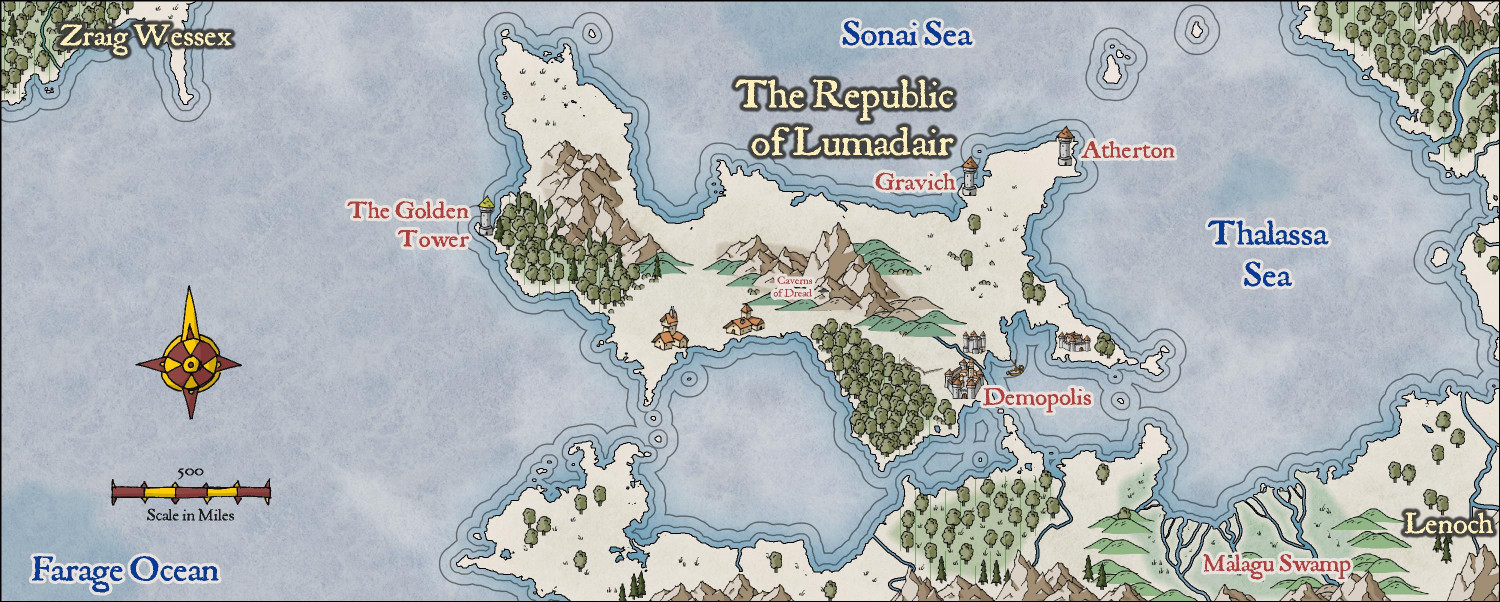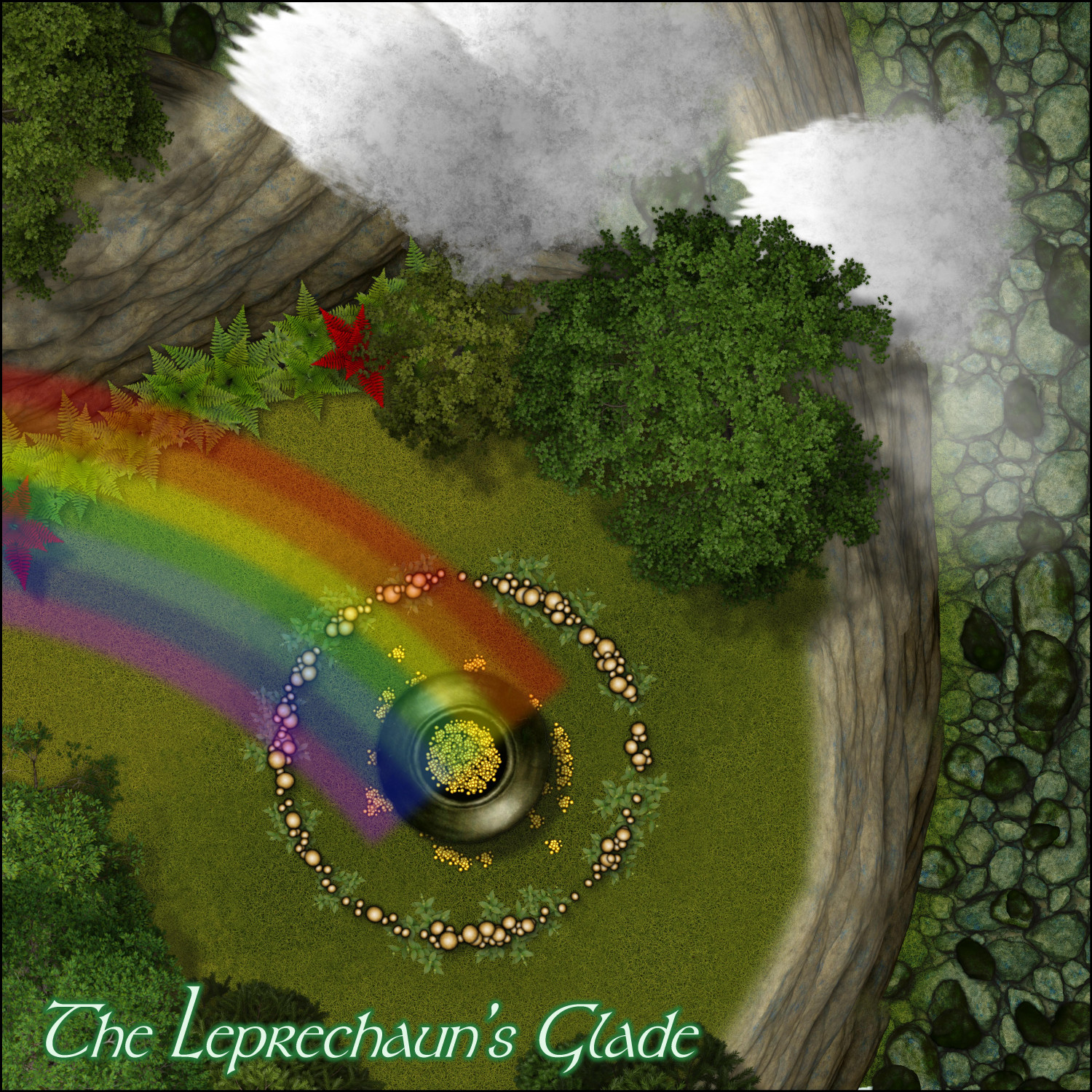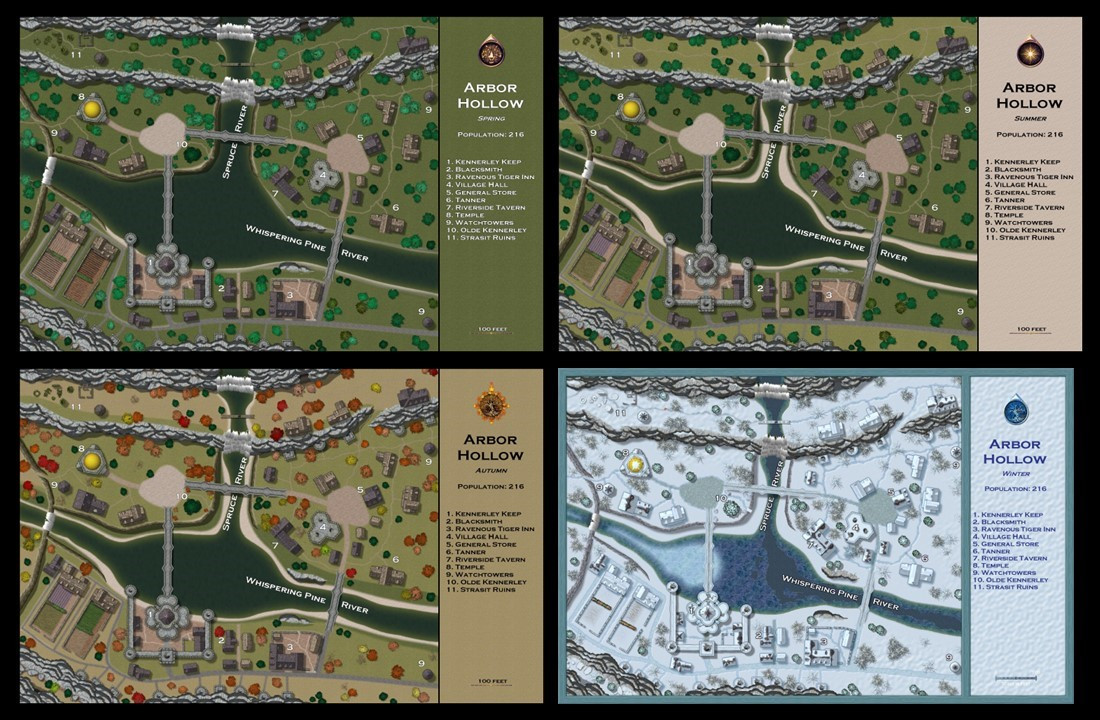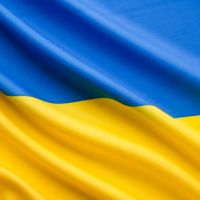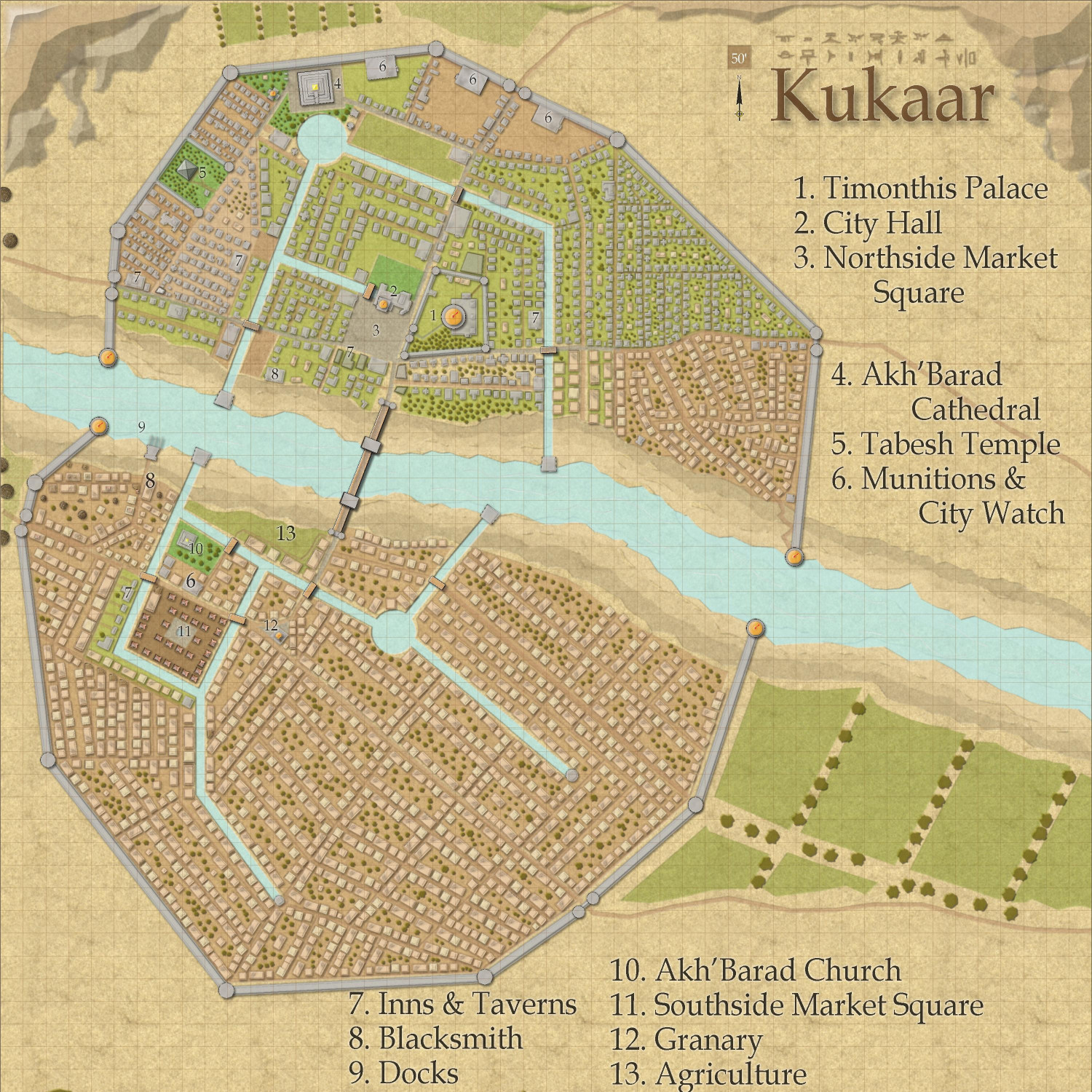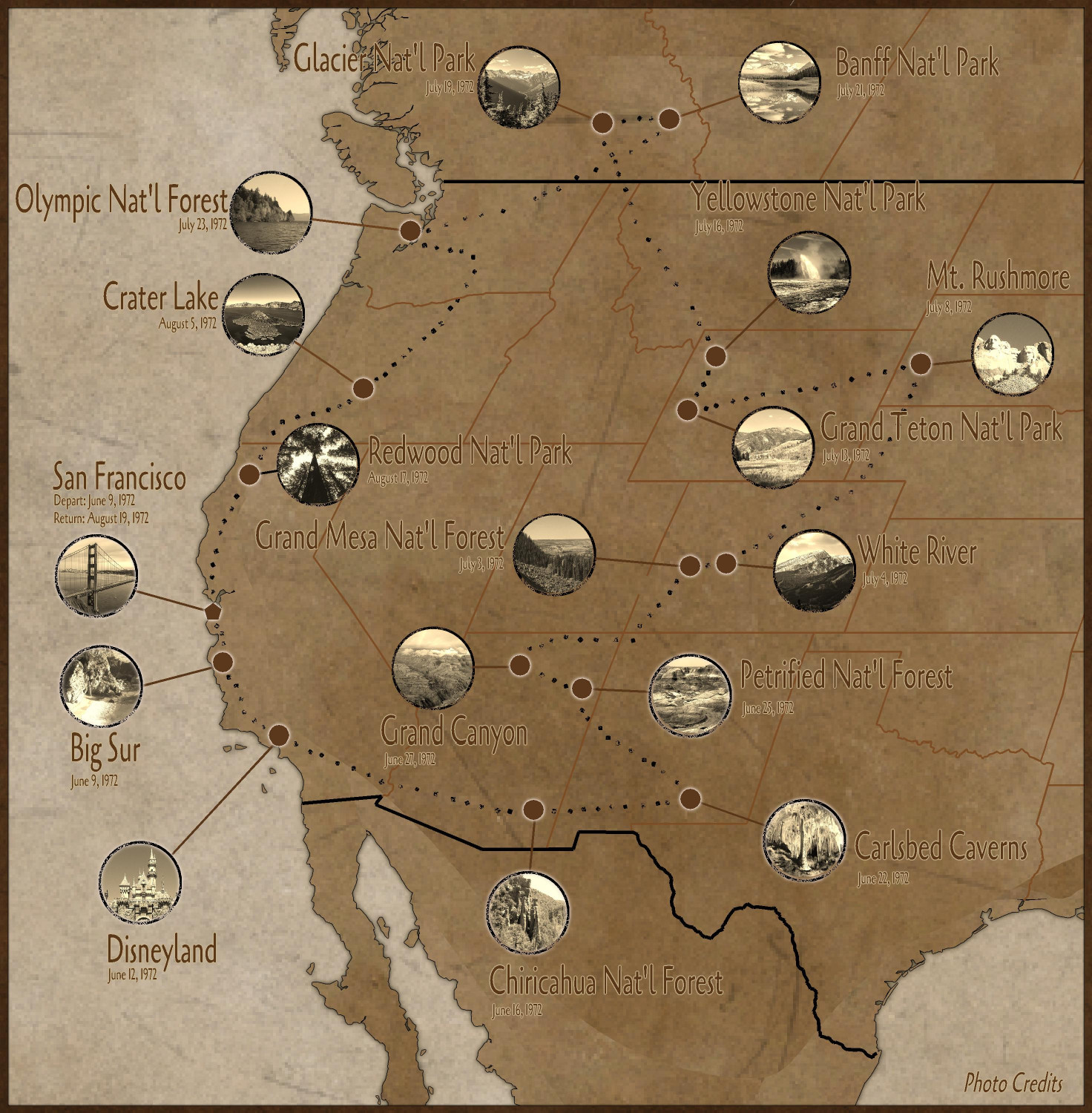Royal Scribe
Royal Scribe
About
- Username
- Royal Scribe
- Joined
- Visits
- 8,800
- Last Active
- Roles
- Member
- Points
- 3,195
- Birthday
- February 5, 1968
- Location
- San Francisco, California
- Real Name
- Kevin
- Rank
- Mapmaker
- Badges
- 16
Reactions
-
[WIP] Varicolor Will-o-Wisps make great Christmas tree lights
Another one that I should wait for December 1st for, but I couldn't hold myself back. A country inn has decorated a nearby tree for Yuletide celebrations.
I was going to try to find little balls and add lighting effects, or maybe just use candles from one of the sets of dungeon symbols...but the varicolor Will-o-Wisps from Creepy Crypts are actually perfect.
-
I designed crenellation symbols
In a recent thread, @Traveller mentioned that he is seeking to discover the best style of designing castles in order to map the many real castles of the U.K.
I have been on a similar quest, though my quest is so that I can design fantastical castles of folklore and fairy tales, like Camelot and Sleeping Beauty's Castle, or the castles in Errol Flynn movies. Castles with many levels of battlements, parapets, towers and turrets, gardens with hedge mazes, and imposing keeps.
One of the things that seems to come up regularly in these forums is crenellations. I was experimenting using Mike Schley's walls along the top edges of my fortresses, and that looked okay, but didn't allow for much flexibility since the symbols come in one length and the wall drawing tool doesn't show the embrasures and merlons.
Anyway, I designed some symbols. I have 5' x 5' square ones. I have trapezoidal ones that can be placed to have arrow slits. I have corner L-shaped pieces. And I have several different rounded ones for round towers, including a tapered one to create arrow slits.
They are all created using CC3+'s drawing tools, with fills from SS4 Dungeons of Schley. There are five different shades of every shape, using Mike Schley's Natural Stone 1 through Natural Stone 5. (This was designed in SS5 Cities of Schley, but I imported the Dungeons of Schley fills as well.) I think that approach allows them to be used in the Atlas. @Monsen, can you confirm?
(I used the Stone Paving Grey for the structures, but tried one tower with Stone Paving Brown to see how it would look. The intention was to try to create the look of
They are all designed for a five-foot wide crenellation -- basically, you'd draw a line or circle with a 5-foot width for the base of the crenellation and then place the merlons on top. I've tried it both placing them by hand and also using SYMBOLS ALONG, and both approaches work reasonably well.
I am not an artist, and I'm sure others here could do much better ones, but I think it gets the job done. I'm happy to share if anyone would like to use them.
Here is the FSC file and also an FCW example:
And here are some images so you can see how they look. (I put a Bevel effect on the merlons, which is showing some odd effects because the colors with the base are close, even though I used a darker shade of the Natural Stone for the base.)
Here's a close-up of the trapezoid merlons along the edge of a straight building.
And here's one using the trapezoidal merlons for the lower level and then the square ones for the higher level. It also shows the corner pieces.
Here are two different round towers. The one on the left has normal merlons, and the one on the right has tapered ones for arrow slits. (I need to fix the Wall Shadow effects -- the base of the tower should not be casting a shadow farther out than the crenellation on top of the tower!)
Here's a quick "proof of concept" of a multi-level castle with different crenellation styles, plus some domes from City Domes for turrets.
And one last tower using the brown paving fill. This one uses a wider merlon using the SYMBOLS ALONG tool, but I don't think it's quite lining up correctly.
Feedback welcome, and feel free to use the FSC if you like them.
-
[WIP] Wizard's Tower - Interior
Been working on the other floors, but I still have several more floors to do. (And this is the Wizard's Tower that I am calling the "small" tower, in contrast to the other one I started that is more like a Council of Wizards' fortress. This "small" tower will still be at least eight stories above ground (though some of them are smaller and one is really just a bell tower), and at least three underground (though one is just the sewers)).
From the main entrance on the third floor, you can go up or down through the spiral staircase in northern wall. Let's go down to the second floor.
Second Floor
This is primarily the main dining area for the wizard and his or her guests. In addition for seating for 15, the dining hall has two fireplaces, with the smaller one used to heat up kettles of tea and other food. This room also has a sink connected to the water system, a separate pipe that runs through the room (for more water in the floors above), several cabinets for dinnerware sets and table linens, and a statue of a female wizard -- a former owner, perhaps the tower's creator. Outside the room, a long table in the hall is used by the kitchen staff and footmen to assemble the food before bringing it in for guests. Unlike the third floor, where the arrow slits were off of a corridor and the rooms had no external windows, on the second floor the arrow slits also allow for daylight to enter the rooms.
Beside that room in the southwest corner of the tower is a cozy, wedge-shaped room with a balcony overlooking the great stairs a floor below. From here, the wizard's family can lean over a railing to greet guests on the landing. This floor also has a restroom, and a small, gated "back door" with a sign directing visitors to continue up another flight to the main entrance.
First Floor
The first floor is at the same level as the main landing with the extra wide stairs, but for added security, there is no doorway there, nor windows or even arrow slits. This floor has a spacious kitchen with a stove and a marble countertop, along with a dining nook for the tower's staff. There are also two rooms equipped with crystals that magically emit cold energy. The one on the south side is called the Cold Room and the one north of it is called the Ice Room, as it is cold enough to freeze water. (Basically, they're magical versions of a walk-in refrigerator and freezer.) The final room on this floor, other than the WC, is a furnace room with a massive furnace for heating water and a great tub of hot water for doing laundry. The room is hot enough that even on rainy days, wet laundry will dry on clotheslines strung up in this room.
(True story: my family did not have electricity for eight years of my childhood and one of my daily chores was to build a fire in an outdoor fireplace like this one to heat water than ran through it in pipes. We also had not one but two outhouses -- fancy!)
Haven't started on the basement yet, so for now, let's go back upstairs.
Fourth Floor
Reversing direction, we can climb up to the fourth floor, the lowest level to have proper windows instead of arrow slits. This floor has the main lounge for entertaining overnight guests, where folks can socialize, play cards and other games, or enjoy a performance from a traveling bard or a minstrel from the nearby village. This room even has a wet bar! I should put in some chairs and couches, though.
This floor also has a chapel (looks like I forgot to put in pews). It also has a WC with a window to the outside, a room for bathing, and two oddly-shaped guest bedrooms.
Working on the fifth floor now, which will include use of one of the two balconies you can see poking out on the south side.
Here are the FCW files if anyone wants to customize them for their own gameplay, using the same licensing terms as the Atlas (where this will someday find a home).
-
[WIP] The Mad Tea Party
I haven't done much with isometric symbols or Perspectives, but I decided to create an outdoor party scene inspired by the Mad Hatter's Tea Party from Alice in Wonderland. Still getting the hang of Perspectives and how to maneuver everything into the right spot. (Spent a lot of time trying to get the chairs in the right positions!)
I was going to make the toadstools as large as trees, but I thought they looked better sized like large bushes.
It's meant to be a birthday party, with tables of (unwrapped) presents off to the side.
Although Perspectives comes with great symbols for all sorts of food and all the silverware, I was surprised that I couldn't find glasses, goblets, mugs, (or tea cups and a tea pot), or other drinking vessels. Unless I missed them, I guess the guests will have to drink straight out of the bottle.
-
[WIP] The Octopus' Garden
I'd like to be
Under the sea...
Here is the second of the three Marine Dungeons I've planned. The first was the Sea Elves Outpost, and the third will be a full-scale, multi-story underwater fortress (though it may take me a bit to get to it, as I'm letting myself get sidetracked).
My goal with this one was to go for speed. I wanted to see if I could create a nice dungeon in a reasonably quick amount of time. Like, imagine it's a Friday evening and I have to whip something together for my players who will be coming over Saturday morning.
I have a collection of public domain images produced by the Society for Creative Anachronism for use as heraldry symbols, and I used one of an octopus to use as a tracing guide. All told, it took me about four hours, I think, to do the first draft. I then went back to rip out the gardens that require sunlight (per the conversation in the Sea Elves Outpost thread) and replace with things that wouldn't require sunlight.
This one is called The Octopus' Garden. It's unknown who first excavated this realm beneath a marine mountain, carving it out in the shape of an octopus, but it has now become the lair of a Sea Hag.
Here it is unlabeled:
Here it is with labels:
The octopus' eight arms serve as wings in the lair (or maybe we should say tentacles instead of wings), with the suckers becoming small rooms in the lair. The southernmost tentacles open to the sea, becoming entrances to the lair, while the other six are fully enclosed. The chambers in tentacles 1, 2, 3, and 4 are used to produce food for the lair's residents.
As you enter -- if you can get past the sharks that the Sea Hag has enchanted to guard her entrance -- you'll see that the chambers closest to the entrance get just enough sunlight (improbably) to grow vegetation. The other chambers grow things that don't need sunlight, particularly marine mushrooms. (True story: freshwater aquatic mushrooms were discovered about 15 years ago. They're only found in a single mile-long stretch of the Rogue River in Oregon, in a spot where my family has a cabin that has been in the family for generations. But in my fantasy realm, saltwater mushrooms are abundant.)
Other chambers are used to raise shellfish, sea urchins, and anemones, who are all fed with vegetation harvested from the kelp forest outside of the lair on the northeastern side.
The chambers in tentacles 5 and 6 are all prison cells. If you look closely, you'll see a double set of gates in the entrances to those chambers. They all have hammocks for the prisoners to sleep in, but they are also all equipped with shackles bolted to the lair's walls for situations where a prisoner may need extra restraints. If you look closely, you'll see that two of the cells have humanoid creatures (probably sea elves) shackled to the walls. Another has a humanoid skeleton, while a fourth has the skeletal remains of some other creature. A fifth has an imprisoned mermaid, and the others in this closeup are unoccupied.
The chambers in tentacles 7 and 8 are are bedchambers, each equipped with a hammock and one or more chests so the resident's valuables don't go floating away.
The "head" of the octopus is a Great Hall, where the Sea Hag holds court. Today she has chosen to take the form of a giant octopus.
The two spots labeled #10, where the octopus' eyes would be, are extraplanar portals. Some say that one goes to a dangerous swamp in the Feywild while the other goes to an even more dangerous fen in the Shadowfell. Others say they go to the Elemental Plane of Water, or to soggy planes of the Abyss.
Why would our adventurers go there? Perhaps they are trying to rescue the mermaid, or the other NPCs. Perhaps they need to use the portals to get to the next stop of their missions. Perhaps they need to negotiate with the Sea Hag for help with something. (Maybe one wants to trade her voice for a love potion -- no, not that.) Maybe the Sea Hag has a magical artifact that they need to complete their quest....
-
[WIP] Lumadair - Hand-Drawn Fantasy (CA221)
Usually I wait until Ralf has had a chance to demo new annuals in the Live sessions, but since there was no Live today because of the May Day holiday, I decided to dive in anyway. Here's my tried-and-true, oft-mapped Republic of Lumadair in the new "Hand-Drawn Fantasy" style.
I used the cutout approach for the rivers. But rather than drawing the swamp terrain around the rivers, I added the Color Key effect to the Swamp Terrain sheet and then copied my magenta rivers to that sheet as well.
It's funny how much I've mapped Lumadair, given that it isn't even intended to be the main location for my campaign world. But it is a conveniently-sized area, and once I did one map of it, I found it useful to do other styles for the same location as a convenient way of comparing them.
-
Lucky Leprechaun
-
[WIP] Atlas Contest (potentially) - Arbor Hollow (summer, autumn, winter, spring)
-
[WIP] Town of Kukaar (Ancient Cities Annual)
Revisiting my ancient town of Kukaar. Now that I'm working on a tiny sliver of the Atlas, I found a place where I would like to place this (once the parent maps are complete). However, my first just-for-fun map was just the wealthier northside district, but to put it in the Atlas, I really needed to map the entire city. I had to expand it southwards, but I didn't like how it looked as a vertical map, so I also expanded east to make it square. That forced me to also add some more residential neighborhoods in the northside, and I decided that a city this size would have a governing noble of some sort, so I also added a palace there.
-
[WIP] 1972 Travelogue (CA93 Modern Journeys)
Using two of Ralf's recent tutorials, Modern Journeys and Real-World Vector Data, I was finally able to create a condensed map of a 71-day vacation my parents took me and my twin on when we were 4 years old. (The images for the icon symbols are all public domain or CC-BY. Photo credits below.)
Like Ralf's Real-World Data tutorial, I had weird gaps in the middle of my map when I tried to convert the vector lines to land. Unlike Ralf, I didn't have the skills to be able to resolve it (despite watching the tutorial three times)...so I kludged a solution by drawing more land over the gaps. There was some other weirdness on the eastern side of the map that I didn't even have to worry about once I realized that I only had to show the part of the U.S. where we traveled.
Also, because I wasn't shading each state differently, I didn't have to trace the boundaries the way Ralf did. I simply moved the lines to a Border sheet and changed their properties to be the color and line thickness that I wanted.
I originally was going to source the photos from the U.S. National Park Service's website, where they have a database of images from their parks that are all in the public domain. (In the United States, all intellectual property published by the government is automatically in the public domain.) I was struggling to find images I liked, so instead I resorted to Wikimedia Commons. I made a point of only using photos that were either in the public domain or were published by a Creative Commons CC-BY license. Those licenses allow for commercial use, unlike the CC-BY-NC licenses (even though this isn't for commercial purposes), and allow for derivatives (unlike the CC-NY-ND "no derivatives" licenses). That allowed me to edit the images to be in sepia and cropped into circles. Instead of following Ralf's approach of making them sepia in the map, I used GIMP to desaturate them to sepia and then crop them to a circle which was then exported to a PNG (with the portions outside of the circle being transparent).
I added the photo credits to a Map Note and added a hotspot in the lower right corner to open up the note. Here are the photo credits (including some I wasn't able to use because of space considerations):
San Francisco, California - Dasturias, CC BY-SA 4.0, via Wikimedia Commons
Big Sur, California - Brian Lopez, Public domain, via Wikimedia Commons
Los Padres National Forest - Damian Gadal, CC BY 2.0, via Wikimedia Commons
Disneyland - Tuxyso, CC BY-SA 3.0, via Wikimedia Commons
Chiricahua National Forest - Zereshk, CC BY-SA 3.0, via Wikimedia Commons
Carlsbed Caverns - Eric Guinther, User:Marshman, CC BY-SA 3.0, via Wikimedia Commons
White Sands National Park - uncredited NPS employee, Public domain, via Wikimedia Commons
Petrified National Forest - AndrewKPepper, CC BY-SA 4.0, via Wikimedia Commons
Grand Canyon - Tuxyso / Wikimedia Commons
Glen Canyon Dam @ Lake Powell - Christian Mehlführer, User:Chmehl, CC BY 2.5, via Wikimedia Commons
Grand Mesa National Forest - National Archives and Records Administration, Public domain, via Wikimedia Commons
White River National Forest - JasonC photography, CC BY-SA 4.0, via Wikimedia Commons
Mt. Rushmore - Colin.faulkingham at English Wikipedia, Public domain, via Wikimedia Commons
Teton National Forest - US Forest Service, Public domain, via Wikimedia Commons
Yellowstone National Forest - Brocken Inaglory, CC BY-SA 3.0, via Wikimedia Commons
Glacier National Park - TaikiMcTaikiface, CC BY-SA 4.0, via Wikimedia Commons
Banff National Park - Sergey Pesterev / Wikimedia Commons
Mt. Baker National Forest - Joe Mabel, CC BY-SA 3.0, via Wikimedia Commons
Falls View, Olympic National Forest - Forest Service of the United States Department of Agriculture. Public domain, via Wikimedia Commons
Crater Lake, Oregon - DSparrow14, CC BY-SA 4.0, via Wikimedia Commons
Redwood National Park - m01229 from USA, CC BY-SA 2.0, via Wikimedia Commons



